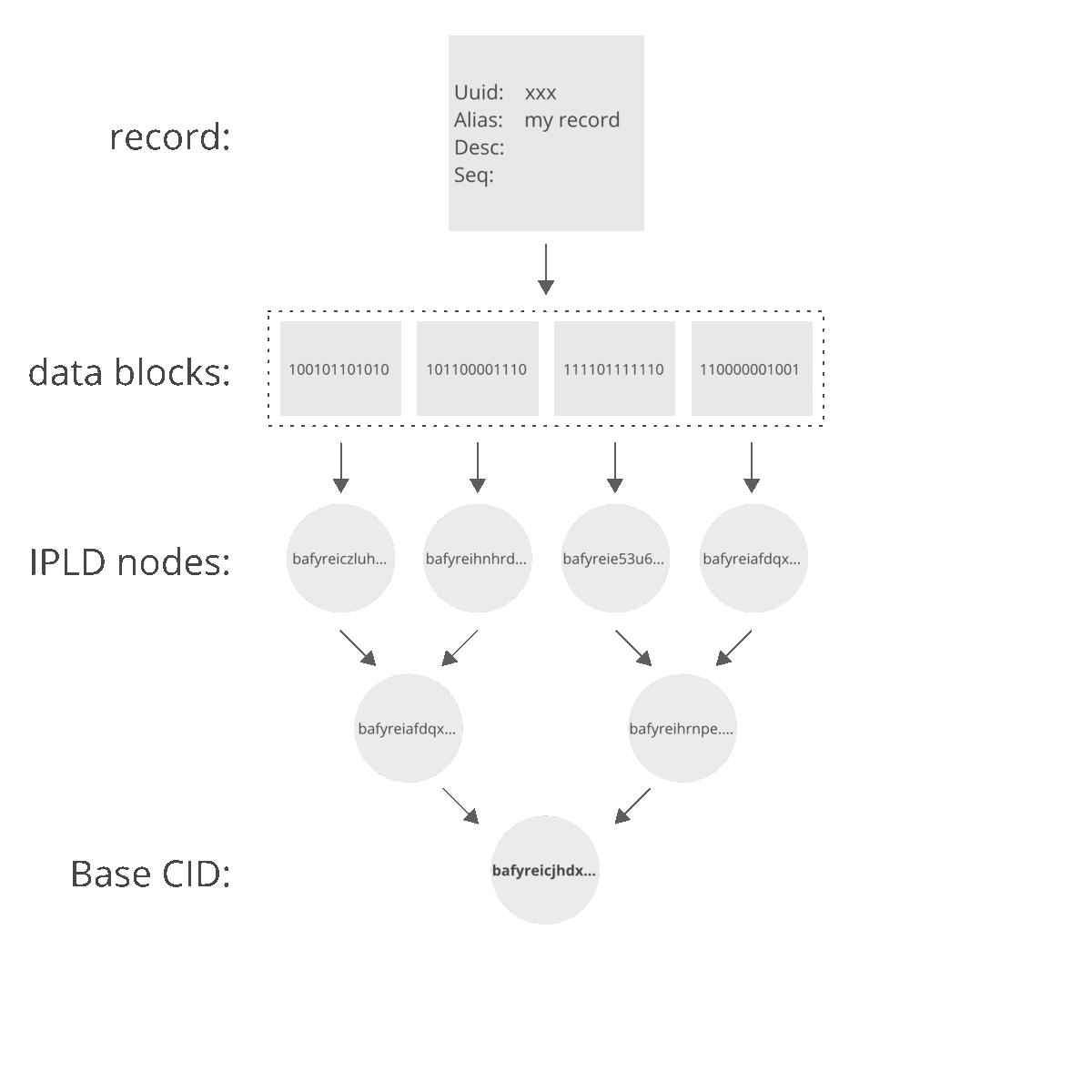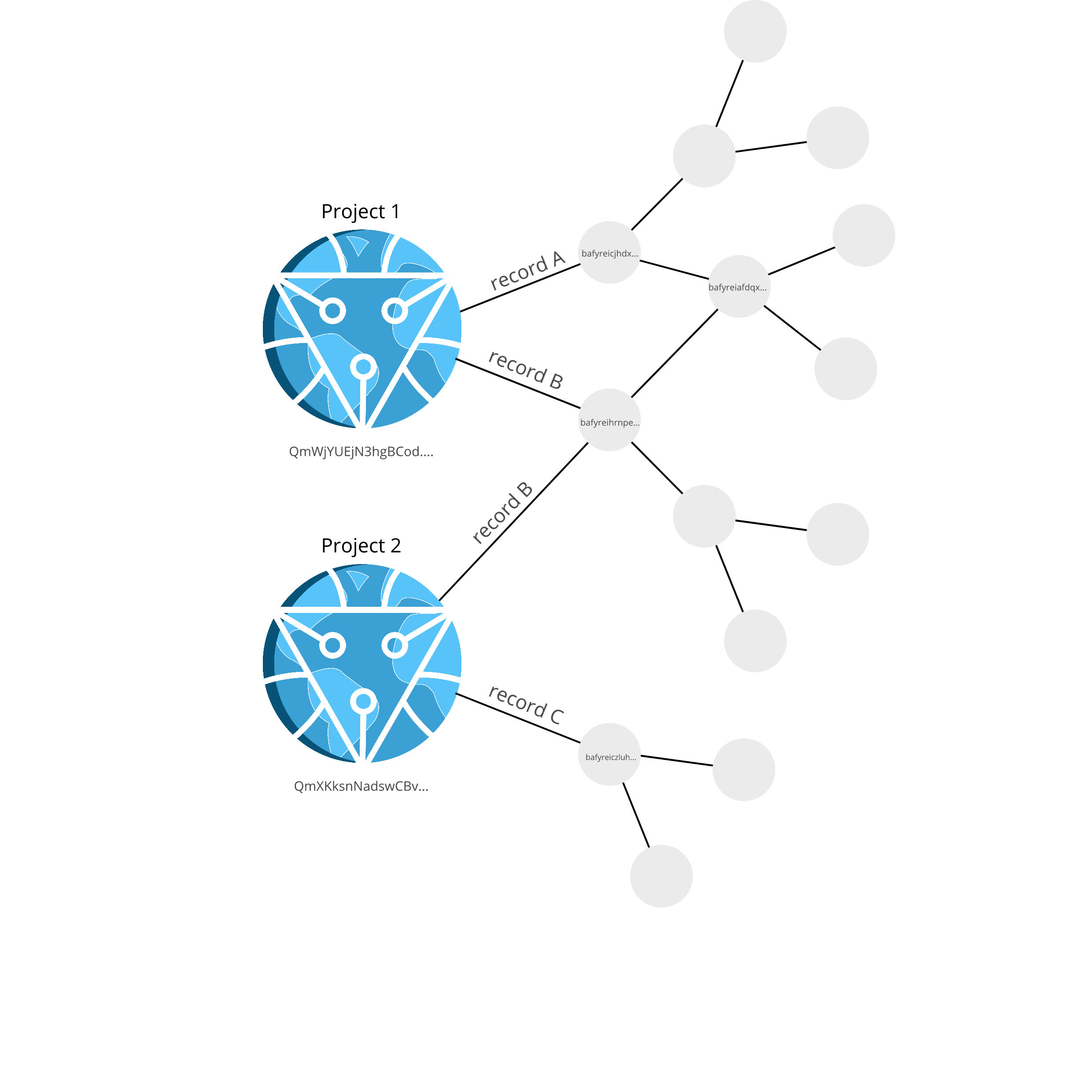About
stark is an InterPlanetary File System-backed database for recording and distributing sequencing experiments. It is both an application and a Go package for running and interacting with stark databases.
Features include:
- snapshot, sync and share entire databases over the IPFS
- use PubSub messaging to share and collect data records as they are created
- track record history and rollback revisions (rollback feature WIP)
- attach and sync files to records (WIP)
- encrypt record fields
- submit database snapshots to pinata pinning service for persistence and distribution
Aims
stark databasescan store, update and share sequencing experiments- each sequencing experiment is documented via an updateable
record - a database and the contained
recordsare distributed, immutable and versionedrecordscan be used by multiple databasesrecordscan be updated but previous versions are still accessible- likewise, previous versions of the database can be retrieved
- a database is referenced by a
project- database instances for the same
projectcan communicate and passrecords - a
projectis accessible if the node which produced it goes offline
- database instances for the same
How it works
Documenting sequencing experiments
Sequencing experiments are encoded as records.
This is currently in its infancy and only basic information can be encoded.
A sequencing experiment could be a biological sample, a sequencing library or a sequencer run. The idea is that a record can encode any of these. We can add links between records to show relationships, such as multiple sequencing runs linked to a single library.
The record data is structured and serialised using a protobuf schema. This means that records are language-neutral, platform-neutral and extensible. It also means that we can wrap the database up in a gRPC server and use protobuf messages to send and receive records to and from the database.
Some features that are currently being worked on:
- linking records to files (e.g. fast5 files)
- attaching process requests to records (e.g. basecall)
Storing records
The heavy-lifting is done by the InterPlanetary File System. Check out the what is IPFS pages for more information on the concepts behind IPFS. Behind the scenes IPFS is doing the following:
- a
recordis broken into blocks, which are then formatted as IPLD nodes - each node is hashed by its contents and used to build a Merkle DAG
- the hash of each node is called a content identifier (
CID) - the
CIDof the Merkle DAG root node is used to address the wholerecord
Merkle DAGs are constructed from leaves first, i.e. child nodes are constructed before parent nodes. This makes every node in the DAG the root of a subgraph that is contained by a parent node(s). This property makes the graph immutable as a change in a leaf node will be propogated throughout the DAG and alter the base CID, effectively producing a new Merkle DAG. This also means that membership queries are 'cheap' and only require a few hashes to compute (see this example with bananas from Consensys).
Here is a simplified example of how a record is represented in the IPFS and how altering the record itself changes the base CID which is used to identify it:

You can see that by changing a value in the record, one of the underlying data blocks changes and this change propogates through the Merkle DAG as CIDs are updated to reflect the change in content. We now have a new base CID to address this new graph, which still represents our record.
However, you can also see that not all nodes in the DAG are altered. This is useful as similar records can share subgraphs (which is a feature which IPFS exploits to collect blocks from different sources and quickly authenticate).
Tracking records
To track records in stark databases, we use a specially formatted IPFS node which uses the unixfs data format and basically serves as a directory in the IPFS. This node is the project node and acts as a parent node which we link record DAGs to.
Each link between project and record is labelled with the CID of the record and the record name (which is used as a database key).
For example:

The figure above shows that record A is linked to Project 1, record B is linked to both Project 1 and 2, whilst record C is linked to Project 2. Records A and B share a subgraph.
You can also see in the figure that each project node has a CID (which begins with Qm&). The project CID is changed when links are added or removed, or when any records are changed.
& as an aside, see here for more information on interpreting CIDs
This means that stark only needs to keep track of the project CID. It can use this to gather up all the links and place them in a runtime key-value store, where the key is the link name given by the user and the value is the record CID. By using a key-value store to track Record CIDs, the project's DAG links only need to be checked once each time the database is opened.
The project CID is the database snapshot - each time the database contents change, the snapshot changes. We can roll-back and fast-forward the database state using the snapshot.
Sharing records
As well as sharing an entire database by giving the CID of the project node, a stark database can also communicate in real-time via the IPFS PubSub messaging service.
This can be used to both let others know what records are being added, as well as to tell one database instance to collect records from another producer with the same project name.